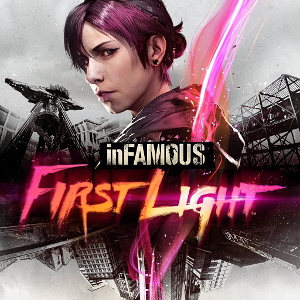 First Published: 29th March, 2016
First Published: 29th March, 2016
Genre: Superhero / Graphic Novel
Contributors: David F. Walker (writer); Ivan Reis (penciller); Joe Prado (artist); Adriano Lucas (colourist); Rob Leigh (letterer)
Available: Amazon.com | Amazon UK
Attackers from another dimension kill Cyborg and steal his arms. But Cyborg doesn’t stay dead and his arms regenerate. He heads to S.T.A.R. Labs to find out what’s going on with his technology. Meanwhile, in another dimension, a war against alien cyborgs rages.
This graphic novel includes the first six issues of Cyborg’s comic. It tells a complete story, though does leave some plot threads open for future stories. The opening introduces what’s been happening in Detroit while Cyborg was off being a superhero, as well as providing space for Cyborg to reflect on his life and relationships. This part interested me the most, as it means finding out about the man behind the snarky superhero.
Inevitably, the two storylines come together, and there’s some alien cyborg action. The highlight of that part was the art. The aliens are detailed, and there’s a certain organic messiness to the cybernetics. The battle scenes are a place where this really gets to shine. My only complaint with the artwork was the cat who Cyborg talks to before and after. The cat didn’t seem as detailed or expressive as the other characters. Though he wasn’t in a lot of frames, it stuck with me.
Cyborg’s backstory is having most of his body destroyed and replaced by machines, including a replacement eye and arms. Disability issues often aren’t addressed in stories like this. When prosthetics give someone superhuman abilities, it’s usually handled as though there aren’t any issues at all. That isn’t the case here, though the way it was handled wasn’t perfect. I liked that the cybernetic technology is treated as the untested equipment that it is, with the concerns that raises for Cyborg about what’s happening to his body. He also faces being treated like a science experiment by the scientists, including his own father. The struggle against feeling dehumanised is linked back to how he felt just after the accident, when he was hesitant to go outside due to reactions from other people. Even after becoming a superhero, he faces people asking him invasive personal questions, from how he goes to the toilet to his sex life. Superhuman prosthetics don’t make these social consequences go away.
Other social concerns are touched on in the early part of the story, such as differing access to medical care. A man with a missing eye and crude prosthetic arm is one of the protesters outside the labs. Detroit is suffering financially, and access to the best medical care is not something everyone has. This leads to body shops, where people can have untested cybernetics attached. It’s an option that can be within reach for people failed by the medical system, but it means surgery in shady back alley establishments and uncertainty about what the cybernetics will do.
It was a great setup… but it gets lost once the action starts, and is wrapped up neatly in a simplistic cure narrative. This highlights an issue with the aftermath in general. I’d expect a lot more devastation left behind, rather than things going back to normal so quickly. The way everything wraps up feels rushed.
I also would have liked to see more of Sarah. She’s shown as a supportive friend, and possible love interest, but doesn’t get to do a whole lot. I couldn’t say much about her. I want to see them as friends before I can really buy them as a possible romance.
I don’t think this is a bad introduction to Cyborg’s solo adventures. It has some time to develop him as a character, as well as some action. There’s more to explore when it comes to how his cybernetics are changing. The ending was the weakest part, though there is the potential to address those themes in more detail in future stories.
[A copy of this book was received from the publisher for review purposes]
 Alternate Titles: Marvel’s Agent Carter
Alternate Titles: Marvel’s Agent Carter